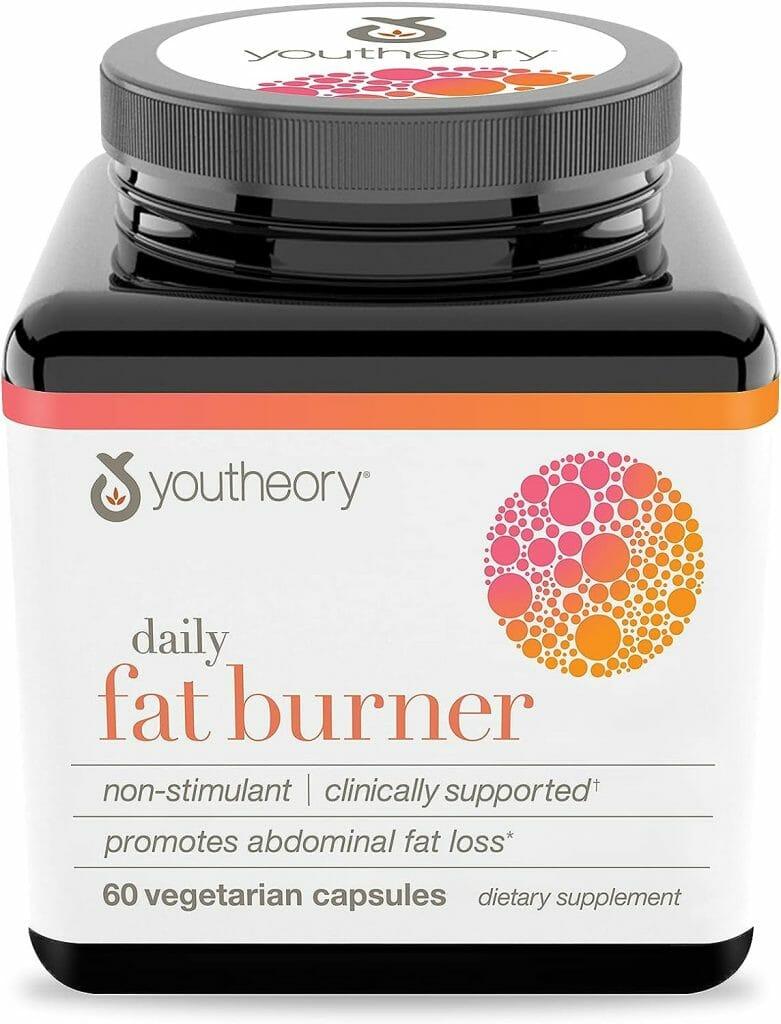When handling diabetes, avoid processed meats like sausages due to harmful chemicals that increase disease risks. Opt for lean proteins such as chicken or turkey. Full-fat dairy products are high in saturated fats; choose low-fat options for heart health. Packaged snacks have hidden sugars and high sodium—pick nuts or veggies with hummus instead. White carbohydrates like white bread lead to blood sugar spikes; opt for whole grains like brown rice. Sweetened cereals contain added sugars causing rapid glucose spikes; try oatmeal instead. French fries are high in saturated fats; opt for veggie sticks or sweet potato wedges. Avoid higher-fat meats and trans fats for better blood sugar control. Sugary treats lead to unstable blood sugar levels—choose fresh fruits for a healthier option. If you explore further, discover essential tips for handling diabetes effectively.
1/ Processed Meats
When overseeing diabetes, it’s essential to avoid processed meats due to their harmful chemicals and increased risks of diseases like cancer and heart disease. Opt for lean protein choices such as chicken, turkey, and tuna instead.
Plant-based protein sources like chickpeas are also healthier alternatives that can help balance blood sugar and lower bad LDL cholesterol levels. Making these swaps can greatly benefit your overall health and diabetes management.
2/ Full-Fat Dairy
When overseeing diabetes, it’s important to be mindful of your dairy choices. Full-fat dairy products can be high in saturated fats, which may not be ideal for heart health.
Opting for low-fat or non-fat dairy options can help reduce saturated fat intake and support overall well-being.
Dairy Fat Impact
Swapping full-fat dairy products for low-fat or non-fat options can greatly reduce your intake of saturated fats, which is beneficial for managing diabetes and lowering the risk of heart disease. Full-fat dairy primarily contains saturated fats, which can harm your heart health.
Opting for low-fat or non-fat alternatives can help you better control your diabetes. Monitoring your dairy fat intake is essential for maintaining overall health and effectively managing diabetes.
Low-Fat Dairy Options
Choosing low-fat dairy options over full-fat dairy is a smart move for individuals managing diabetes. It helps reduce saturated fat intake and supports overall heart health. Full-fat dairy products are high in saturated fat, increasing the risk of heart disease. Opting for low-fat or non-fat dairy alternatives is a better choice to maintain a healthy diet while managing diabetes effectively and promoting heart health.
3/ Packaged Snacks

Managing your diabetes, packaged snacks may not be the best choice. These snacks often hide sugars and contain high levels of sodium, which can negatively impact your blood sugar levels.
Opt for healthier alternatives like nuts or vegetables with hummus to better control your diabetes and support your overall health.
Hidden Sugars in Snacks
Packaged snacks can sneak in hidden sugars that may cause blood sugar spikes in individuals with diabetes. Common hidden sugars like high fructose corn syrup, maltose, and dextrose are often lurking in these snacks. Reading nutrition labels is essential to spot these sneaky sugars. Opt for whole, unprocessed snacks like nuts, seeds, and fresh fruits to steer clear of hidden sugars and better manage your diabetes.
| Hidden Sugars | Examples |
|---|---|
| High fructose corn syrup | Candy, granola bars |
| Maltose | Cereal bars, pretzels |
| Dextrose | Crackers, flavored yogurt |
High Sodium Content
Avoiding high sodium content in your snacks is crucial for managing your diabetes effectively. Packaged snacks often contain excessive sodium levels, which can elevate blood pressure and pose cardiovascular risks for individuals with diabetes. Consuming these snacks may lead to fluid retention, complicating blood sugar control.
Checking nutrition labels is important to monitor sodium intake. Opt for healthier alternatives like nuts or seeds to reduce sodium intake and support overall health.
4/ White Carbohydrates
White carbohydrates like white bread, rice, and pasta are commonly associated with negative impacts on blood sugar levels for individuals with diabetes. These foods have a high glycemic index, leading to rapid spikes in blood sugar. Continued consumption can contribute to insulin resistance, complicating blood sugar management.
Opting for whole grain alternatives such as brown rice and whole wheat bread provides more nutrients, aiding in better blood sugar control.
5/ Sweetened Cereals

Switching from white carbohydrates to sweetened cereals can greatly impact your blood sugar levels, as sweetened cereals are high in added sugars leading to rapid spikes in glucose.
Consuming sweetened cereals regularly can contribute to weight gain and increase the risk of developing complications associated with diabetes.
Opt for oatmeal or low-sugar cereals as alternatives to better manage blood sugar levels and overall well-being.
6/ Dried Fruits
Consider replacing dried fruits with fresh alternatives to better manage your blood sugar levels and overall health as part of your diabetes management plan.
Dried fruits, despite their fiber content, have concentrated sugars that can cause blood sugar spikes. Fresh fruits are lower in calories and sugar. Familiarity with the glycemic index of fruits aids in choosing wisely.
Moderation and pairing dried fruits with protein or healthy fats can help control blood sugar levels effectively.
7/ French Fries

Indulging in French fries can greatly impact your health due to their high saturated fat and calorie content, increasing the risk of weight gain and heart disease.
Saturated fats in French fries can worsen diabetes outcomes, leading to potential complications.
Opt for healthier alternatives like vegetable sticks or baked sweet potato wedges to reduce saturated fat intake and support better overall health.
Making these dietary swaps can aid in managing weight and lowering the risk of diabetes-related issues.
8/ Higher-Fat Meats
When handling diabetes, it’s essential to choose lean protein options like skinless poultry, fish, and lean cuts of pork instead of higher-fat meats. These healthier meat alternatives can promote improved blood sugar control and overall health outcomes for individuals with diabetes.
Lean Protein Choices
Choosing lean protein options such as chicken, turkey, and fish over higher-fat meats can greatly benefit your health and diabetes management. Lean meats are lower in unhealthy saturated fats and can help reduce the risk of heart disease and cancer.
Opting for lean protein sources like pork tenderloin supports better health outcomes and aids in managing diabetes effectively. Substituting higher-fat meats with lean protein choices is recommended for improved overall health.
Healthier Meat Alternatives
To improve your health and manage diabetes effectively, consider opting for healthier meat alternatives to higher-fat meats.
Red meat, high in saturated fat, can increase the risk of heart disease and cancer. Choosing lean protein options like chicken, turkey, or pork tenderloin can benefit your overall health.
Cooking Methods Matter
Utilize healthier cooking methods to reduce saturated fat content in higher-fat meats and improve heart health. Opt for grilling, baking, or broiling over frying to minimize unhealthy fats.
Trim visible fat before cooking to lower overall fat intake and decrease the risk of heart disease. Choose lean cuts like skinless poultry or lean beef to limit saturated fat consumption.
Enhance flavor by marinating meats in herbs, spices, or citrus juices without added fats.
9/ Foods With Trans Fats
Consuming foods high in trans fats greatly raises bad cholesterol levels and the risk of heart disease, particularly for individuals with diabetes. To manage your diabetes and heart health, avoid processed snacks, fried foods, and certain margarines that contain trans fats. Check food labels for partially hydrogenated oils, a common source of trans fats. Making smart choices can help lower inflammation and reduce the risk of complications associated with diabetes.
| Foods with Trans Fats | Effects on Health |
|---|---|
| Processed Snacks | Increase bad cholesterol levels |
| Fried Foods | Raise risk of heart disease |
| Certain Margarines | Worsen inflammation |
10/ Sugary Treats

Indulging in sugary treats can lead to rapid spikes in blood sugar levels for individuals managing diabetes.
- Consuming sugary treats can result in unstable blood sugar levels, complicating diabetes management.
- Weight gain and insulin resistance are common consequences of excessive sugary treat consumption.
- Opt for healthier alternatives like fresh fruits or low-sugar snacks to satisfy cravings without risking blood sugar spikes.
Frequently Asked Questions
What Foods Do Diabetics Need to Avoid?
Avoid processed meats, full-fat dairy, packaged snacks, refined sugars, unhealthy fats, and white carbohydrates. Swap for whole grains, oatmeal, and low-sugar alternatives to manage blood sugar levels effectively. Prioritize your health by making smart dietary choices.
What Are Some Diet Tips for Diabetics?
To manage diabetes effectively, limit saturated fats, avoid sugary foods, choose whole grains, include lean proteins, and monitor carb intake. This helps lower insulin resistance, control blood sugar, stabilize levels, aid weight management, and support overall health.
What Are 3 Rules of a Diabetic Diet?
To manage diabetes effectively, prioritize whole grains, fruits, and vegetables. Include lean proteins and healthy fats for balance. Avoid saturated and trans fats, and opt for water over sugary drinks. Monitoring carbs and staying hydrated are key.
What 3 Drinks Should Diabetics Avoid?
Avoid sugary beverages like soda, energy drinks, and sweetened iced tea. Limit fruit juices, even if 100% juice. Consume alcoholic beverages in moderation, especially drinks with sugary mixers. Opt for water, unsweetened tea, or black coffee for better blood sugar management.
Conclusion
To summarize, making wise food choices is essential in managing diabetes. By avoiding processed meats, full-fat dairy, packaged snacks, white carbohydrates, sweetened cereals, French fries, higher-fat meats, foods with trans fats, and sugary treats, you can better control your blood sugar levels and overall health.
Remember to focus on whole, nutrient-dense foods like fruits, vegetables, lean proteins, and whole grains to support your diabetes management plan. Stay informed, make mindful choices, and prioritize your well-being.








Leave a Reply
You must be logged in to post a comment.